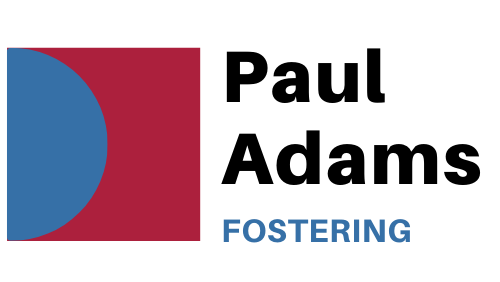Blog
Blog

By Paul Adams
•
25 Feb, 2024
In 2023 I wrote a good practice guide about ‘Developing a family safer caring plan’ with an accompanying template (Form FSCP). The book has been well-received, and is being used by a number of independent and local authority fostering services in England, Scotland, and Wales. I have also delivered training to some fostering services to coincide with the roll-out of these materials. One issue that has come up from time to time, is the question of whether the purpose of safer caring plans is to keep children safe, and whether the plan is a document for the child, or for the foster carer. It sounds like some of this thinking was a precursor to the following recommendation in a recent Ofsted report 50232351 (ofsted.gov.uk) : The registered person should ensure that risk assessments and safer care plans provide foster carers with a detailed understanding of the risks and risk reduction strategies for each child. Children should be provided with their own age-appropriate safe care plan. (‘Fostering Services: NMS 4.1) For me, that recommendation doesn’t distinguish between the purpose and nature of risk assessment and management plans, and family safer caring plans. I’m also not convinced that this requirement is underpinned by NMS 4.1. NMS 4.1 notes the general and uncontroversial expectation that ‘children’s safety and welfare is promoted in all foster placements.’ This should go without saying in relation to every aspect of providing foster care, and the whole child care system is predicated on that ambition. The second part of the standard requires that ‘children are protected from abuse and other forms of significant harm’ and it gives the examples of ‘sexual or labour exploitation.’ In 2021 I authored good practice guidance, with an accompanying template (Form R), about ‘Devising and updating risk assessment and management plans in fostering’. The sub-heading of that publication talks about ‘individual safeguarding plans for fostered children’, and in summary, is about keeping children and young people safe from harm. It considers numerous areas of risk or abuse, including going missing, self-harm and suicide, poor mental health, eating disorders, drug and alcohol misuse, bullying, gangs and county lines, sexual exploitation, trafficking and radicalisation, amongst some other areas. The template recognises the contextual nature of risk, and asks practitioners to consider how risk can be reduced, mitigated, and managed. Risk assessment and management plans are put together with specific children in mind, and are individualised to consider their specific needs. The guidance notes that involving children and young people in developing these plans will usually result in better outcomes, and although there may be some complexities to consider, the plans should be placed on the child’s record, and in most cases, be fully available to them in an age-appropriate way. I would argue that family safer caring plans are different, and serve a different purpose. They emerged as a practice in the 1990’s, not as a result of the need to better at keeping children safe, but as the result of concerns about the high numbers of allegations of harm being made against foster carers, usually by children in their care. The practices that were encouraged for foster carers in the early days of safer caring, were often about the implementation of rigid and formulaic rules, that were intended to make it less likely that an allegation might be made. A reading of the various serious case/ practice reviews involving foster carers makes it obvious that having a safer caring plan in place does not keep children safe. That was very clearly highlighted in the 2017 serious case review in which ‘Claire’ (aged 8) was found to have the same sexually transmitted infections as her foster carers. The safer caring plan had said that the male carer would not be alone with her, but the review concluded that this could not be ‘adequately monitored or assured.’ Furthermore, the plan had ‘put in place a veneer of assurances that the child is adequately safeguarded.’ As noted above, the NMS are clear about the need for children to be kept safe, but contrary to what is suggested by Ofsted in the inspection report quoted above, there is no requirement for children to have an individualised safer caring plan. It is important to note that safer caring is not mentioned at all in the NMS. Rather, within the foster carer Training, Skills, and Development Standards, the requirement is to ‘develop and maintain ‘safer caring’ guidelines for you and your household.’ It is described as a plan for the foster carers and their wider household, and while that includes fostered children, it does not indicate that they should be prioritised over others, or that it is about keeping them safe. That is not to suggest that safer caring plans are unimportant in how they impact on foster children. They often serve a very useful purpose in helping children to feel safe. For example, if a child has been sexually abused by a birth parent in their bedroom, it might be hugely reassuring for them to know that within the fostering household, no one will enter their room without their consent. Good practice requires that safer caring plans take full account of a child’s history, and wishes and feelings. That is one of the main themes in my good practice guidance that encourages carers to avoid blanket approaches in favour of making carefully considered decisions according to the individual needs of the children in their care, with a recognition that these will change over time. However, the safer caring plan ultimately remains a plan that is decided by the foster carers about how they will behave, and how they will encourage children to behave safely with each other in the foster home. Children will need to know about ‘the rules’ in their home, and for some children it might be helpful to see them written down. For others, having a written ‘safer caring plan’ specific to them as a foster child, might be experienced as stigmatising and upsetting, particularly to those in meaningful permanent arrangements with people they consider as parents. All families will have ‘rules’, but in most cases, they are discussed and agreed verbally in the course of day-to-day normal family life. In considering the Ofsted inspection report cited above, it is also important to challenge the idea that safer caring plans are all about ‘risk reduction strategies.’ Rather, they should be about promoting practice that is ‘risk sensible’ and not ‘risk averse’, and about maintaining ‘normal family life’ to the fullest extent possible, taking into account the needs of all household members. This is consistent with what children in foster care repeatedly tell us. Paul Adams is an independent trainer and consultant specialising in fostering.
